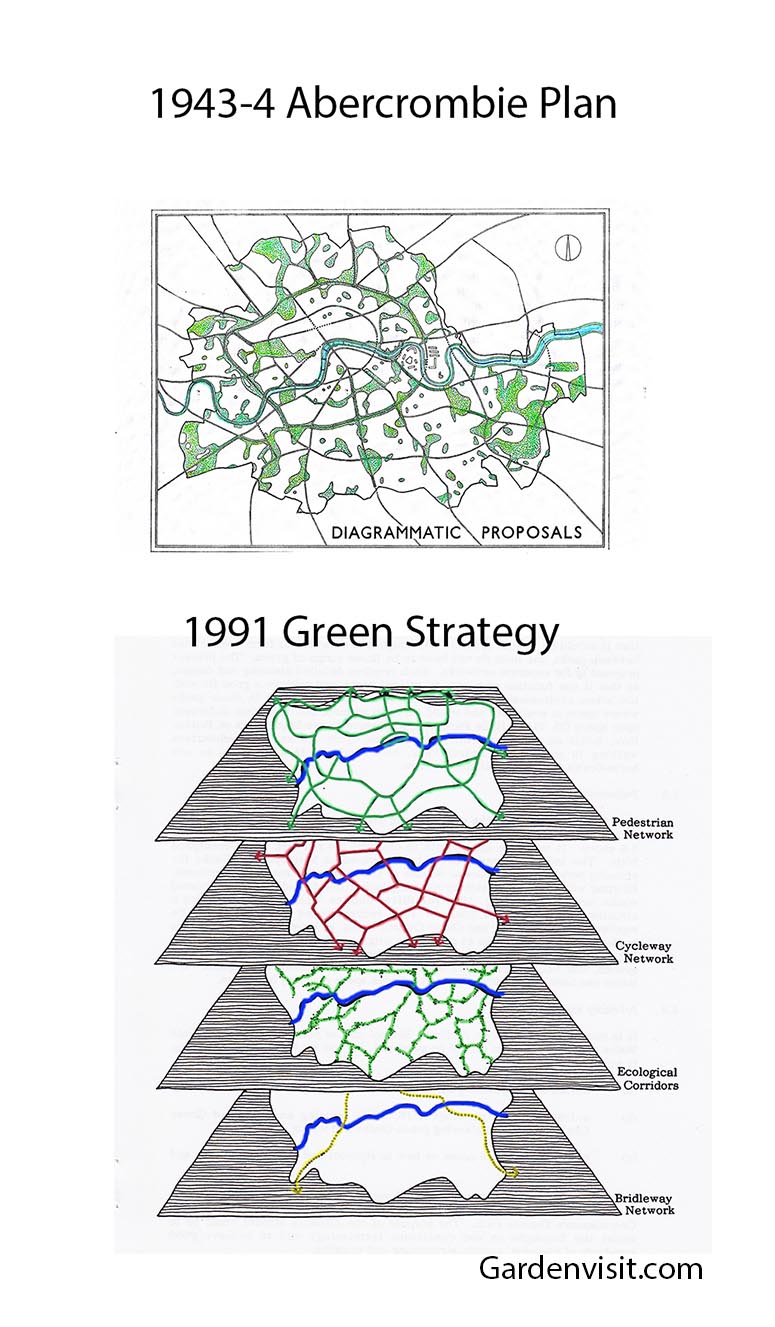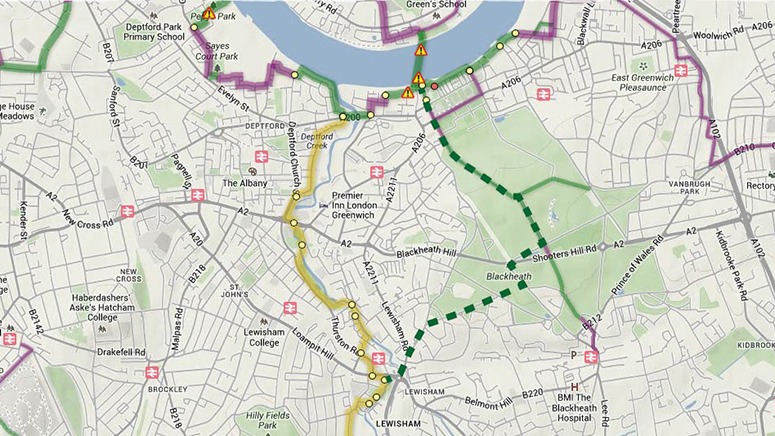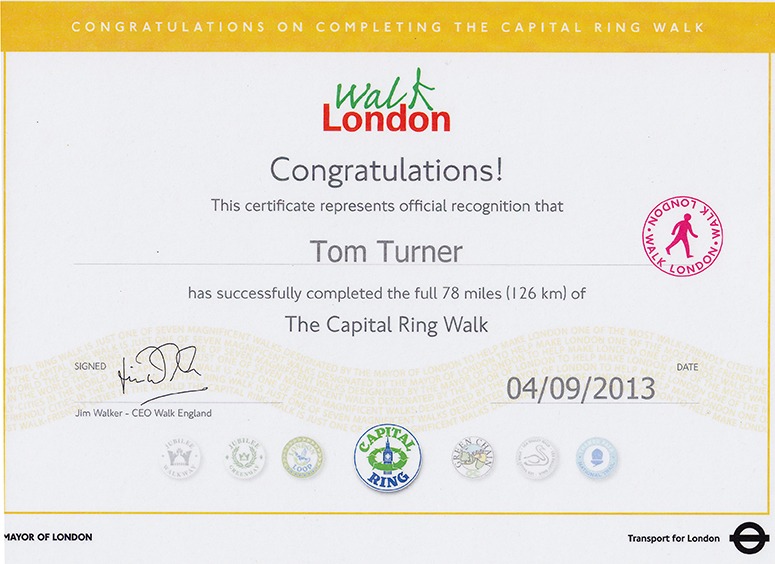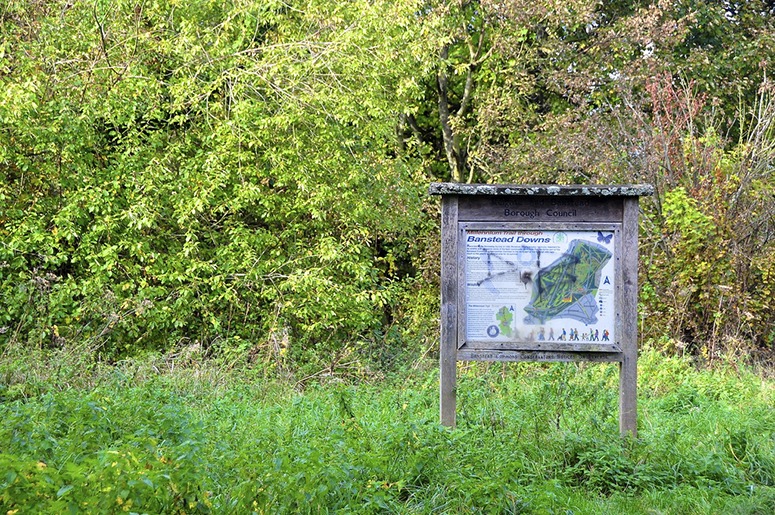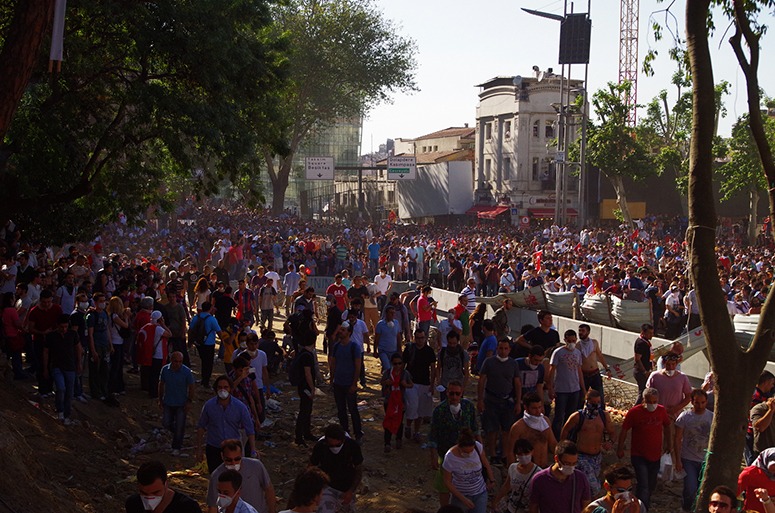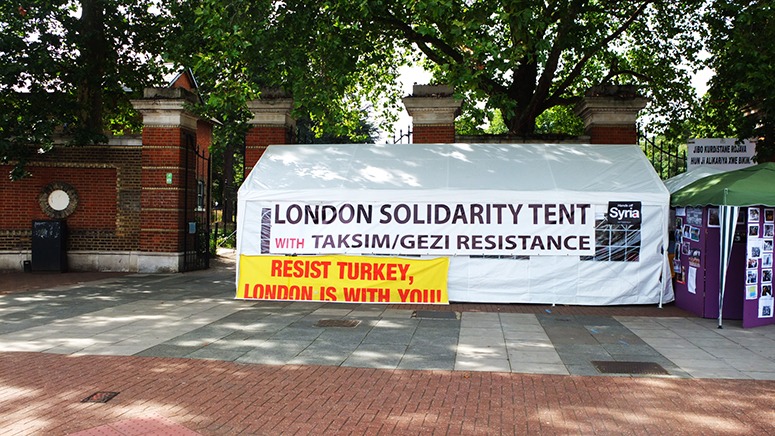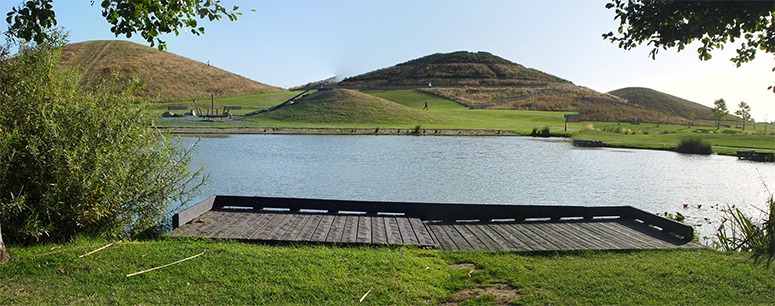The Gardenvisit.com website has a history of, and commentary upon, the planning of parks, park systems, public open space and green infrastructure in London. It was written and published about ten years ago and is due for an update. While this is in hand, we offer links to several pdf documents:
- Download pdf of article Open space planning in London: from standards per 1000 to green strategy Town Planning Review 63(4) 1992 (the first page is available free)
- Download a free pdf copy of John Claudius Loudon’s 1829 Breathing Places for the Metropolis – a landscape architecture and open space plan for London.
- Download a free pdf copy of the Open Space and Park System chapter from the Abercrombie and Forshaw County of London Plan 1943-4
- Download a free pdf copy of Tom Turner’s Report to LPAC Towards a green strategy for London 1992
- Download a free pdf copy of the Thames Gateway South Essex Green Grid Strategy (2004-5) Green Grid Partnership and LDA Design (John Hopkins was the director in charge at Landscape Design Associates)
- Download a free pdf copy of the Greater London Authority’s East London Green Grid 2008
- Download a free pdf copy of the Greater London Authority’s All London Green Grid 2012
The diagrams, below, show the open space/green infrastructure diagrams from the Country of London Plan and the 1991 Green Strategy. From 1951 to 1991 London open space planning was dominated by the modernist idea of an open space deficiency – which should be corrected by a hierarchy of small, medium and large parks. The odd, and unstated, implication of the ‘deficiency’ concept is that there should be large-scale demolitions in the London Borough of Islington (which has 0.011ha per 1000 population) and large-scale building on open space in the London Borough of Richmond upon Thames (which has 13 ha per 1000 population). I’d like to see the results of public consultation on these ideas – they are wealthy boroughs with highly articulate residents. In 2013 the average house price was £545,301 in Islington and in £614,633 in Richmond. Could the profit on selling park land in Richmond could go to buying park land in Islington? Or was the concept of open space deficiency stupid in 1951 and absurd in 2013? One-word comments welcome!
Abercrombie’s idea that open spaces should be connected slept from 1943-1991 but has been revived and is now embodied in the idea of making a ‘Green Grid’. This term appeared in the Thames Gateway South Essex Green Grid Strategy and is now formalised in the All London Green Grid. Personally, I would rather it was described as a Green Web. Its primary geometries should be more circular and centripetal than rectangular. As a Germanic word, used to describe the product of weaving, a ‘web’ entails the use of overlapping strands (as in the green gtrategy diagram, below). The concept also gains from association with the spiders and caterpillars, which make organic and non-rectangular webs of great strength and flexibility, and from other biological use to describe ‘a tissue or membrane in an animal body or in a plant’. Also in 1991, 1991 Tim Berners-Lee gave ‘web’ another useful connotation. He wrote that ‘The web contains documents in many formats. Those documents which are
hypertext, (real or virtual) contain links to other documents, or places within documents’. Comparably, I think of a Green Web as having overlapping strands which inter-link different kinds of space which are green in the sense of ‘good from an environmental point of view’. Some of the links and spaces should be green in the sense of ‘vegetated’. Others should be water bodies, urban squares, streets and cycleways – which may, or may not, contain green plants.


